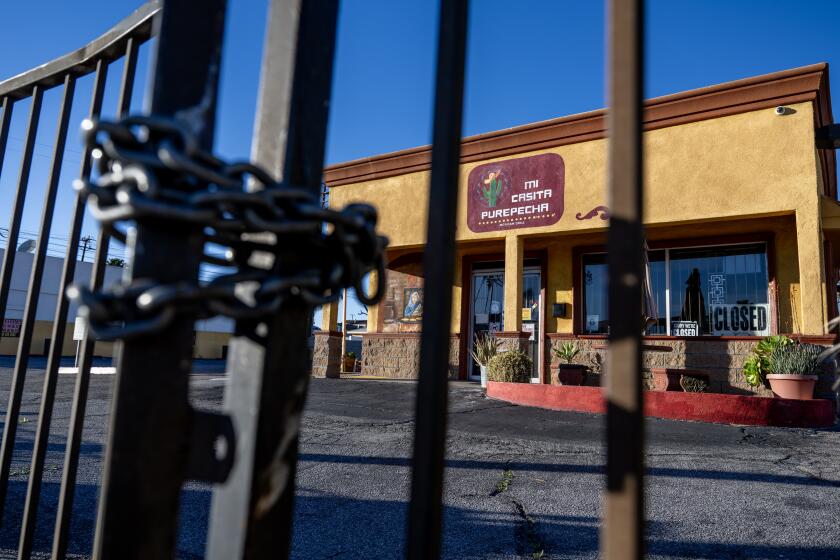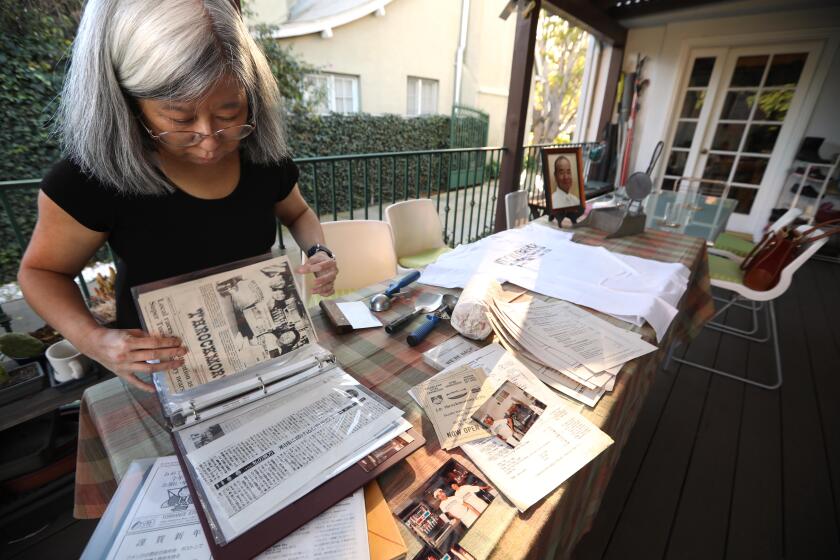With fewer options, South L.A. braces for bigger bills at fast-food restaurants
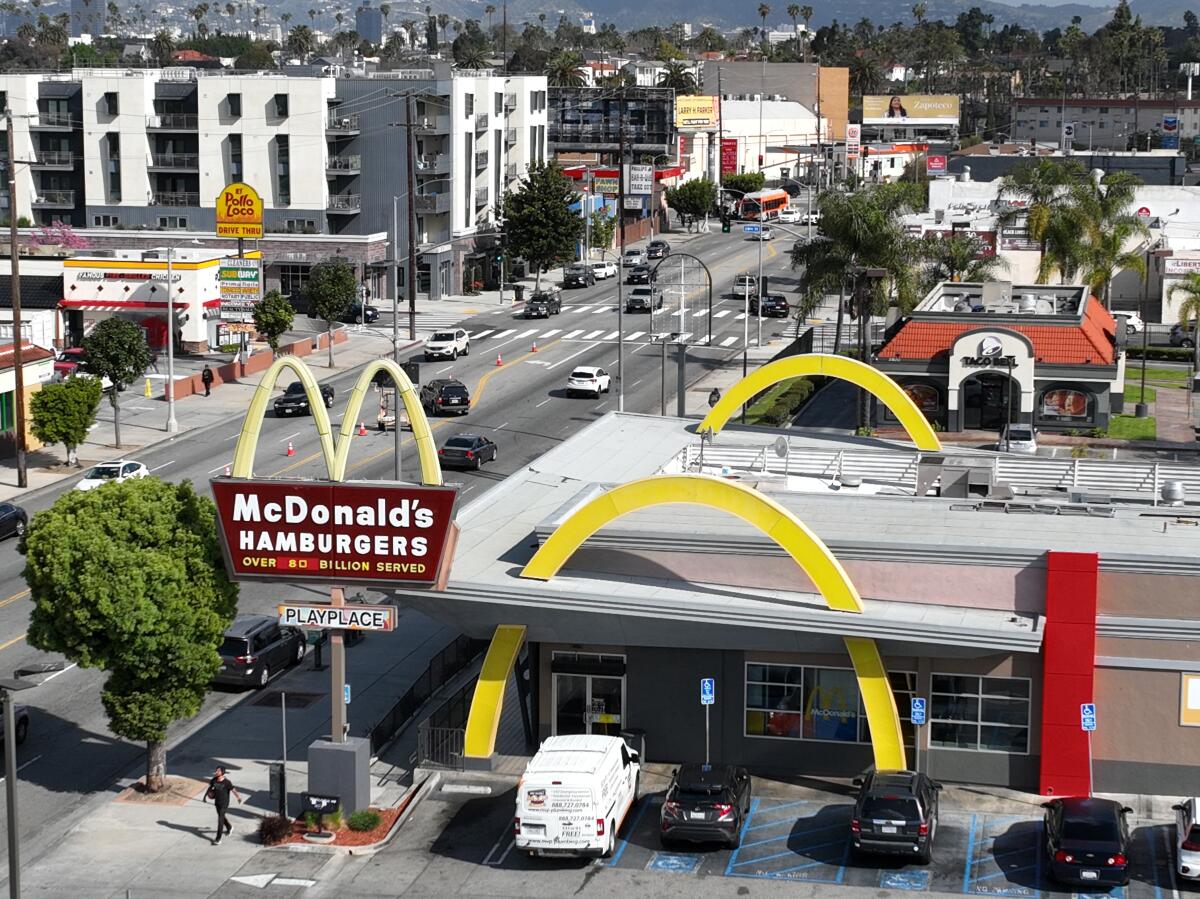
- Share via
McDonald’s. Yoshinoya. El Pollo Loco. Little Caesars. Panda Express. Taco Bell. And not a supermarket in sight.
On a six-lane stretch of Crenshaw Boulevard that thrums with traffic, the dining options within view highlighted a problem South Los Angeles has long faced — and one that could worsen when the minimum wage for fast-food workers is boosted from $16 to $20 on April 1.
About 40% of South L.A. residents live in a food desert, according to USC’s Institute for Food System Equity. That means they reside in an area where there is limited access to affordable, healthy food because there is no supermarket nearby. For many people in the 51-square-mile region, fast food plays a major role in daily nutrition. And it is likely to get more expensive as chains are planning to raise prices to partially offset increased labor costs as a result of the new wage law.
Sitting in her car in the shadow of the McDonald’s on Crenshaw, Roshonda Baker was angry about the looming price hikes, which are anticipated to largely be in the range of 4% to 5%.
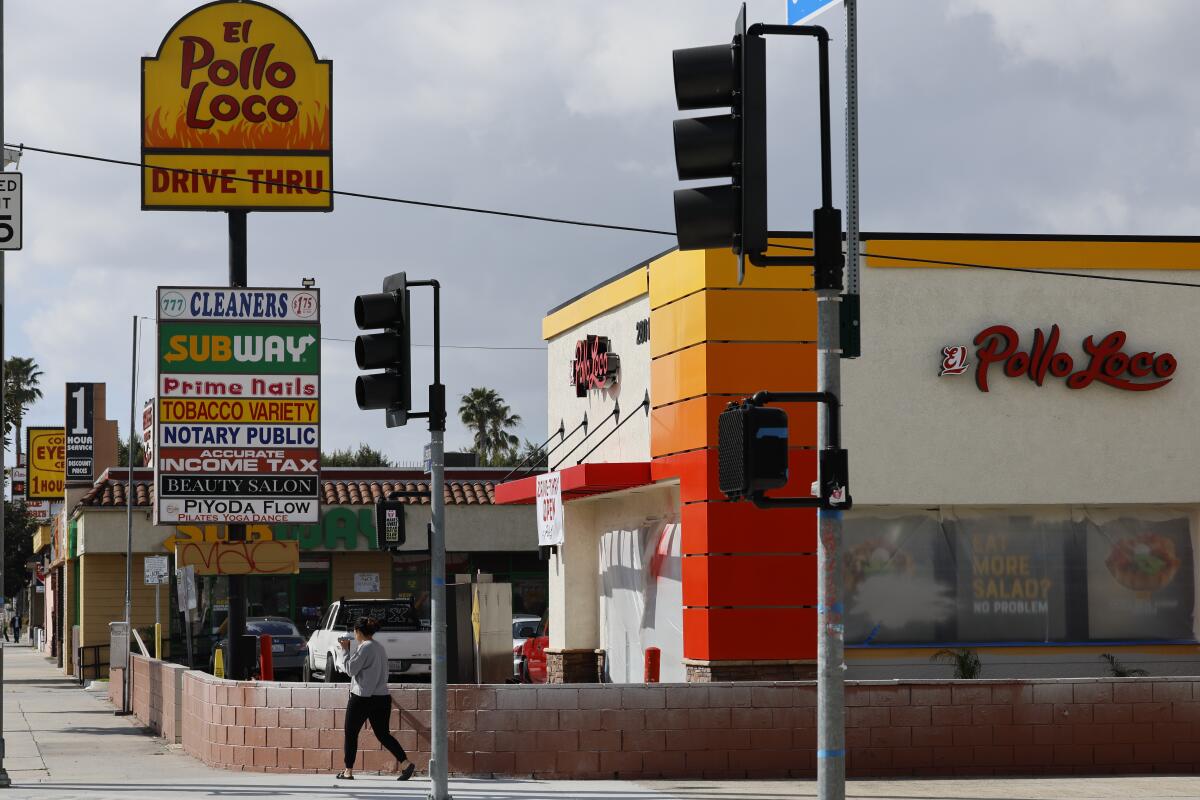
“I can definitely see it taking an effect on families,” said Baker, 41, a caretaker for psychiatric patients. “Kids do want fast food — they don’t really care for a home-cooked meal. So ... you have to deal with an upset child who can’t get it if you can’t afford it.”
Fernando Ochoa Jauregui and his company, 8A Food Trucks, have been accused in lawsuits of not delivering food trucks and trailers to clients across California and pocketing their money. He denies any wrongdoing.
Baker, who lives nearby, said she didn’t care for fast food, but her 3-year-old grandson — then bouncing in her lap — eats it up. “He loves chicken nuggets,” she said. To save money, Baker plans to try feeding him more meals prepared at home. Envisioning a $12 fast-food meal that could soon cost $13 or more, she lamented: “There’s no win in it for the consumer.”
The Times reached out to eight fast-food chains, including the six represented on Crenshaw. Some declined to comment, others did not respond to interview requests and a few provided statements that acknowledged price increases are imminent. “Raising menu prices slightly will allow us to support our franchisees, many of whom are former employees themselves who began their careers as restaurant workers, in delivering a better customer experience,” San Diego-based Jack in the Box said in a statement.
Not everyone plans to moderate their fast-food intake if prices jump.
“Honestly, I would not change anything — no,” said Jacky Grant, a DoorDash driver swinging by a Little Caesars on Crenshaw to pick up a cheese pizza for her son. “It’s good that they are raising their salaries.”

Others interviewed said much the same. Economists and public health experts noted that eating habits are hard to break and food deserts offer few options that allow consumers to switch things up. They said that fast-food companies are adept at calibrating pricing increases so as to not lose too many customers.
“Price is one factor” that people consider when evaluating their options, said Kayla de la Haye, director of USC’s Institute for Food System Equality. “If it is convenient, if kids will eat, if it is delicious — those are really big factors, too. In South L.A., they do have a lot more restricted options for food. There’s a historic under-investment in their community. And so that’s part of the reason why these grocery stores aren’t there.”
While there are a few supermarkets near the cluster of franchises on Crenshaw, fast food fills the larger vacuum in South L.A. “That’s food that’s been available and affordable,” De la Haye said, “so it’s not especially surprising that that’s where folks go and that they might be willing to pay more for it.”
A real-life “Peach Pit” in Beverly Hills served devotees burgers for years, until it closed suddenly in 1997. Now, the family behind Jeremiah P. Throckmorton Grille explains all.
The new law, which applies to franchises and corporate-owned stores, covers workers at chains with 60-plus locations in the U.S. Fast-food companies are also expected to enact layoffs, turn to automation and cut back workers’ hours in an effort to tamp down the cost increases brought on by the increased minimum wage.
Matt Haller, president of the International Franchise Assn., said in a statement that the average quick-service restaurant is “facing about $250,000 in increased operating costs, leading to unaffordable food prices for customers, job cuts, and many small businesses struggling to keep their doors open.”
It is possible, of course, to increase prices too much. “If they want to reach those who are most likely to eat there — [people who] are usually more lower income — they can’t push the prices too high,” said Shon Hiatt, associate professor of management and organization at the USC Marshall School of Business. “Or else they move to a different demographic of people [and] the volume’s not there.”
But David M. Smith, a professor of economics at Pepperdine’s Graziadio Business School, said that the lack of food options in South L.A. would make it easier for fast-food companies to “pass along” their higher costs — with possibly serious effects on some people.
“It will potentially put consumers in ... areas of higher financial risk at an even greater risk for unexpected financial emergencies,” he said.
Celebrity chef Matthew Kenney, who once boasted an empire of dozens of restaurants worldwide, has closed at least 12 spots since 2022 while fending off lawsuits.
The forthcoming price increases present something of a paradox in low-income communities. South L.A. has one of the region’s biggest concentrations of people living in poverty — and they are now expected to have to spend more on food. According to a 2018 report by the L.A. County Department of Public Health, South Los Angeles was the area with the highest rate of food insecurity in the county.
“People paying for the increase there are at best in the same socioeconomic class as the people getting the pay increase,” said Brian Wheaton, an economist at the UCLA Anderson School of Management. “It’s less likely in South L.A. that the [increased] minimum wage is producing the redistributive benefits that advocates want to see.”
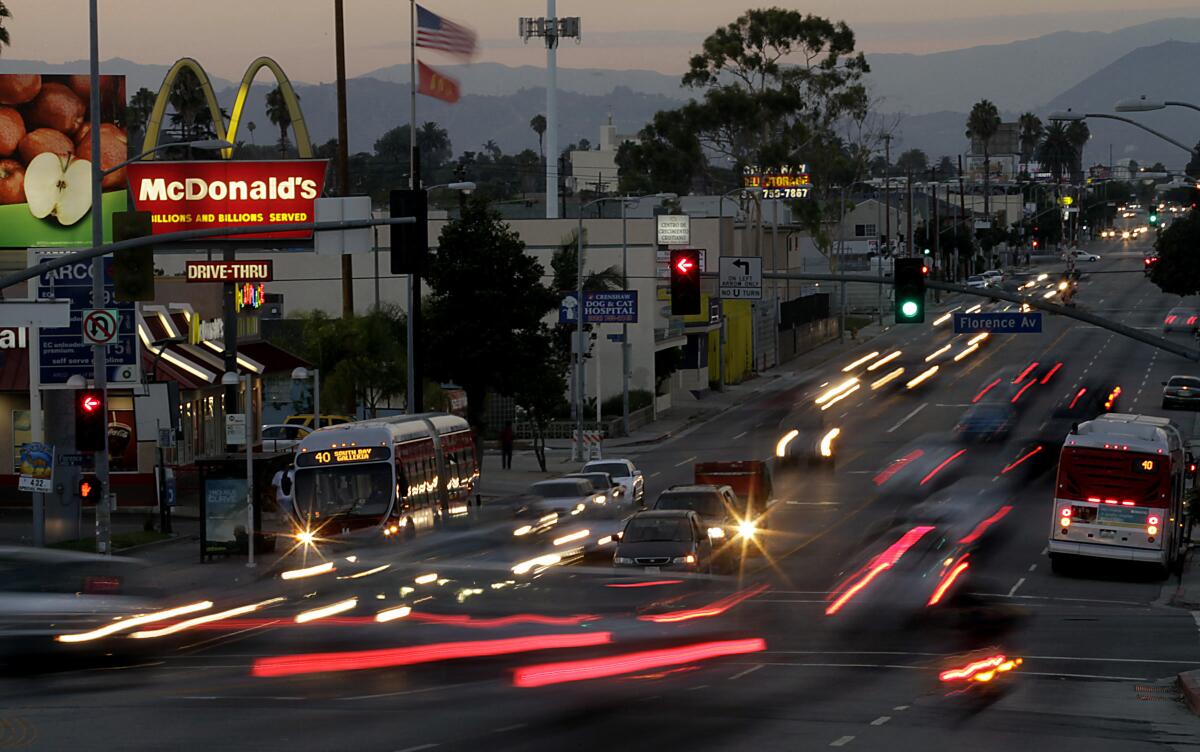
On Crenshaw, Alberto Corona hopped out of his car and headed toward a Yoshinoya restaurant to pick up a meal for a grandson, who can’t eat the spicy Mexican food prepared by his wife. Corona had been enticed by coupons from the chain. He wistfully recalled decades past, when places like Yoshinoya were “way cheaper.”
“It’s something we cannot control,” said Corona, 46, who works in construction.
Corona said that he doesn’t eat much fast food — and he might eat even less as a result of higher prices. In any case, he prefers his wife’s home cooking.
“It’s more healthy than this kind of food,” he said.
Then he smiled, and walked into Yoshinoya.
More to Read
Sign up for Essential California
The most important California stories and recommendations in your inbox every morning.
You may occasionally receive promotional content from the Los Angeles Times.

